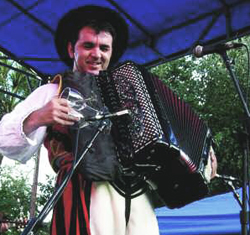Living in South Central Texas, we operate in a very diverse ethnic atmosphere and encounter every description of strange and unusual instrument.
Over time, we (and our engineers) have discovered some techniques that work well for some of these applications. There may be other, possibly better ways to accomplish the task.
But the following represent tried and true methods that work for us, as well as the musicians we support.
Accordion. What do you call 100 accordions in the Rio Grande? A good start! The accordion is found in so many styles of music, it boggles the mind. Within those styles are different kinds of accordions, as well, and they need to be addressed separately.
In the traditional Mexican forms of Conjunto, Tejano, etc., the button accordion is most often found. The musician will either have a clip-on type mic and a wireless unit, which means you provide a DI and hope the musician doesn’t bend over too close to the monitor or turn the wrong way.
Or, the musician will want a mic on a boom stand, which is positioned to the musician’s right, very close to the center of the instrument. For the stand, we prefer the short (low profile) boom.
For all accordions, we’ve found that the Electro-Voice N/D468 (formerly 408) provides the preferred response. It’s widely known by sound companies as a drum mic.
The N/D468 has a wide dynamic range, with the ability to handle shrill SPL that the accordion presents. Just take a 3 dB to 6 dB cut from the highs and you’re pretty much home free.
This egg-shaped microphone swivels in its bracket, so it’s very easy to position and stays out of the musician’s way as well. As an option, the Shure Beta 57 also works well.
Cajun accordions are smaller and have a piano side (stage right) and a bass side (left). Most Cajun players will have a clip-on type mic on the piano side (again, provide a DI), or they will often take the XLR and plug it straight into the accordion. They will often ask you for a separate mic for the bass side.
Again, the 468 works very well for this purpose. Just watch out for low-end rumble.
Celtic accordionists, as well as German polka, Klezmer, and other European styles use the larger piano accordion. They normally do not have any pick-ups or clip-ons and will usually ask for two mics, one for each side. Celtic artists may also play concertinas or other gypsy-inspired instruments. The miking techniques are the same. Another mic that we like in this application is the Sennheiser 421.
The most important thing to remember about accordion is that any player over the age of 12 has probably suffered hearing loss and will most likely ask for a lot of accordion in the monitor. If you’re experiencing feedback from the stage, the first suspect is always the accordion and the range will usually, but not always, be somewhere between 4 kHz and 6.3 kHz.




















